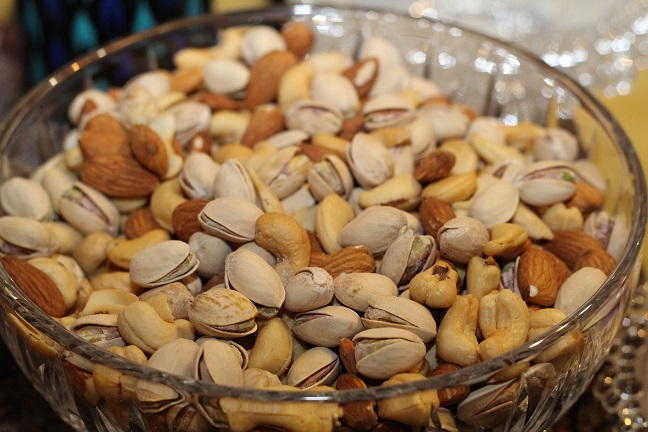Alternative Therapies
Selenium ~ a little goes a long way

by Tammera J. Karr, PhD, BCHN, CNW, CGP
Dietary selenium (Se) is an essential micronutrient that affects various aspects of human health, including optimal immune responses. Se is involved in regulating oxidative stress, redox, and other crucial cellular processes in nearly all tissues and cell types, including those involved in innate and adaptive immune responses.
Selenium is found in varying quantities in the rocks and soils of different regions of the world. In these areas, this is reflected in the differing amounts of selenium in forage crops and diets and in the animals and humans that consume locally-produced foods.
A Little History
Jons Jakob Berzelius discovered selenium in 1817 Gripsholm Sweden.
It was Thressa Stadtman who identified biological importance. Further studies showed her that selenium in protein occurred in the form of an amino acid called selenocysteine, which Is an important redox enzyme glutathione peroxidase.
Selenium is an essential trace element in food and is a vital part of many enzymes that take part in redox reactions. Despite its early discovery, it was largely ignored, it wasn’t until the 1930’s selenium was found to form toxic compounds that caused disease in livestock.
It was in 1957, Schwarz found selenium a mysterious substance in bakers’ yeast, but not in brewers’ yeast, that was absolutely essential as a protein component in the diet, and its absence caused liver necrosis.
Now for some science
Data from studies in humans suggest that Se-supplementation may enhance immunity, including both humoral and cell-mediated responses. Perhaps the most compelling data regarding the detrimental effects of Se-deficiency come from studies involving Keshan disease. This cardiomyopathy affects residents in regions of (China) with Se-deficient soils. Se-supplementation acts not only to elevate antiviral immunity but to prevent genetic adaptations in the viral genomic RNA that leads to increased virulence.
Studies by the Beck laboratory of infection with another RNA virus, influenza A, have revealed this virus also undergoes increased mutational alterations in genomic RNA resulting from Se-deficiency. Se-deficiency may result in elevated inflammation, perhaps due to higher levels of oxidative stress. Early in infection, a higher percentage of macrophages are found in the Se-deficient lungs. In later stages of influenza infection, the levels of macrophages were lower in Se-deficient mice. Still, no changes were observed in levels of influenza-specific antibodies between Se-deficient and -adequate mice. This suggests that Se-deficiency affects cell-mediated immunity to a greater extent than humoral immunity for anti-influenza viral responses in this model.
OK, your eyes have glazed over all the science – the point of this is to share there is still more we can do to improve our immunity to viruses that we are not doing. Our Standard American Diet (SAD) is devoid of important trace minerals such as selenium. Note I said trace mineral, which means a little goes a long way in helping reduce insufficiency and improve immune response. For “herd” immunity to occur, we have to have a healthy immune system with adequate amounts of selenium and zinc. It is these foundational minerals that set chemical responses into action that damage and prevent viruses from taking root in our cells.
 In a Nut Shell
In a Nut Shell
Selenium is an essential trace mineral necessary for bodily processes, including cognitive function, thyroid problems, protect against cardiovascular disease, support a healthy immune system, protect against cancer, asthma and support fertility in both men and women.
It contributes to thyroid hormone metabolism and DNA synthesis, protects against oxidative damage and infection.
It is present in human tissue, mostly in skeletal muscle.
Dietary sources are varied. They include Brazil nuts, seafood, brown rice, eggs, and meats.
The amount of selenium in food often depends on the selenium concentration of the soil and water where farmers grew or raised the food.
How Much do you need?
The key here once again is “trace mineral,” which means tiny amounts of 200 mcg (so small it fits on the tip of a ballpoint pen). This can be easily reached with 4-6 brazil nuts or 40-65 mcg through typical servings of seafood. And farm eggs contain a nutrient-packed cocktail which includes 20 mcg of selenium.
Here is to healthy immune systems and real foods
References
http://chemwiki.ucdavis.edu/Inorganic_Chemistry/Descriptive_Chemistry/Elements_Organized_by_Block/2_p-Block_Elements/Group_16%3A_The_Oxygen_Family/Chemistry_of_Selenium http://www.nature.com/nchem/journal/v3/n7/full/nchem.1076.html
https://history.nih.gov/exhibits/stadtman/nose_selenium.htm
http://www.merckvetmanual.com/mvm/toxicology/selenium_toxicosis/chronic_selenium_toxicosis.html
Hoffmann, Peter R, and Marla J Berry. “The influence of selenium on immune responses.” Molecular nutrition & food research vol. 52,11 (2008): 1273-80. doi:10.1002/mnfr.200700330
John R. Arthur, Roderick C. McKenzie, Geoffrey J. Beckett, Selenium in the Immune System, The Journal of Nutrition, Volume 133, Issue 5, May 2003, Pages 1457S–1459S, https://doi.org/10.1093/jn/133.5.1457S


